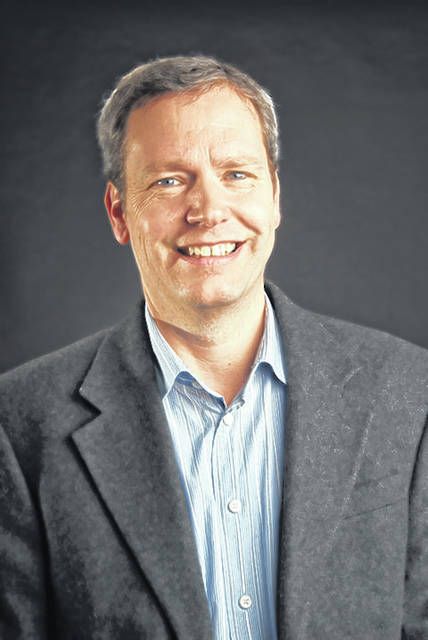Click here to subscribe today or Login.
On a summer afternoon in 1975, the most notorious labor leader in the United States disappeared, the presumed victim of a mob hit. Today, the case remains unsolved, Hoffa’s body has never been found, and his story continues to fascinate the public. Martin Scorsese’s new film, “The Irishman,” about a mob hitman who claims to have killed Hoffa, is only the most recent in a long line of film and TV productions about the one labor leader most Americans have ever heard of.
Hoffa’s fame and disappearance have long cast a shadow over the labor movement, linking it to corruption and reinforcing in popular culture a menacing view of organized labor. Five decades later, Hoffa’s story is still used by anti-labor forces as justification for efforts to curb union power.
Hoffa first emerged as a national figure representing the menace of union power in the 1950s, entering the spotlight just as the labor movement reached its zenith, with union members making up one-third of the workforce. Accompanying labor’s postwar rise was a series of congressional investigations into union corruption, extortion, collusion and embezzlement. These probes were promoted by business groups like the National Association of Manufacturers, anti-union Republicans and Southern Democrats worried about the inroads a powerful labor movement was making into the South.
Liberals also supported these investigations; they viewed labor racketeering as an internal threat to national security, comparable to the 1940s specter of communist infiltration into unions. These investigations culminated in 1957 with the inquiry conducted by the Senate’s McClellan Committee, which held a series of televised hearings from 1957 to 1959 that made Hoffa a celebrity.
Hoffa, who was elected president of the Teamsters in 1957, seemed to embrace his notoriety. Throughout his career, he had faced a series of investigations, criminal indictments and allegations that he had mob ties. When he became a focus of the McClellan Committee hearings, he responded with defiance. He refused to invoke Fifth Amendment protections and instead sparred with his interlocutors. He never denied having organized crime associates or that some of his Teamster allies had criminal records.
Instead, he argued that to build a union in his industry he had to work with these people.
Hoffa’s supporters shrugged off the allegations that he had turned over portions of the union to gangsters and celebrated the strong contracts they gained under his leadership. They identified with his pugnacious style and accepted his claim of being persecuted because of his aggressive efforts on their behalf. “Jimmy Hoffa speaks my language,” one member told a reporter in 1960.
For the rest of the nation, however, Hoffa came to symbolize the danger of union power. A Life magazine cover in 1959 warned: “A National Threat: Hoffa’s Teamsters.” Hoffa’s critics, including Robert F. Kennedy and John F. Kennedy, raised the frightening possibility that the Teamster leader could shut down America’s transportation system.
Hoffa was a boon to the anti-union groups who had pushed for these congressional probes. A 1959 Wall Street Journal editorial titled “The Virtue of Mr. Hoffa” noted, “The difficulty in curbing labor union power thus far has been that the people have not clearly seen, or believed, the danger.” His reputation solved that problem.
At the same time, union corruption provided a wedge issue that separated the labor movement from its liberal supporters. Thus when Congress in 1959 passed the Landrum-Griffin Act, which imposed new regulations on union governance, banned one of labor’s most potent organizing tactics, the secondary boycott, and imposed new restrictions on another key tactic, organizational picketing, John F. Kennedy promoted it as a law that “would put Mr. Hoffa and his associates out of business.”
The new law did no such thing. Hoffa remained in office until 1971, even after federal convictions in 1964 for jury tampering, conspiracy and mail fraud that sent him to federal prison. Meanwhile, other economic sectors such as New York City’s Garment District, where influence by organized crime and endemic corruption went hand in hand, remained largely unaffected by the Landrum-Griffin Act. The law’s main impact was to hamstring union organizing efforts, contributing to labor’s inability to respond to the powerful employer counteroffensive of the 1980s, which led to plummeting union membership rates. Currently about 10% of the American workforce is unionized, a far cry from Hoffa’s heyday in the 1950s.
Now, amid calls to fight growing economic inequality by rebuilding the labor movement, Hoffa’s legacy still plays a role in public perception of unions, though so much has changed.
The Teamsters today are quite different from five decades ago. A court-monitored agreement signed in 1989 purged officials with mob ties, and every member now votes directly for the union’s top leadership. But like the rest of organized labor, the Teamsters also play a much smaller role in the economy. Most truck drivers now are nonunion and their working conditions have deteriorated badly. Long-haul drivers today often work 60 to 80 hours a week, while their real wages have fallen by as much as 50% since the 1970s.
If Hoffa provides labor’s opponents with an enduring and sinister symbol of union power, then the fate of these truck drivers, once the Teamsters’ core constituency, illustrates the bleak fortunes of a labor force where union power has been severely eroded.





